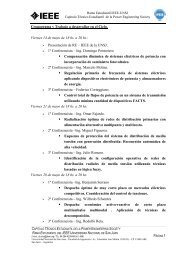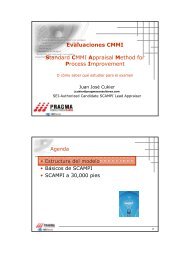Sistemas de puesta a tierra para instalaciones de baja tensión.
Sistemas de puesta a tierra para instalaciones de baja tensión.
Sistemas de puesta a tierra para instalaciones de baja tensión.
Create successful ePaper yourself
Turn your PDF publications into a flip-book with our unique Google optimized e-Paper software.
Abstract: The problems of system grounding, that is, connection to ground of<br />
neutral, of the corner of the <strong>de</strong>lta, or of the midtap of one phase, are covered.<br />
The advantages and disadvantages of groun<strong>de</strong>d versus ungroun<strong>de</strong>d systems<br />
are discussed. Information is given on how to ground the system, where the<br />
system should be groun<strong>de</strong>d, and how to select equipment for the grounding of<br />
the neutral circuits.<br />
Connecting the frames and enclosures of electric<br />
ap<strong>para</strong>tus, such as motors, switchgear, transformers, buses, cables conduits,<br />
building frames, and portable equipment, to a ground system is addressed.<br />
The fundamentals of making the interconnection or ground-conductor<br />
system between electric equipment and the ground rods, water pipes, etc. are<br />
outlined.<br />
The problems of static electricity-how it is generated, what<br />
processes may produce it, how it is measured, and what should be done to<br />
prevent its generation or t o drain the static charges to earth t o prevent<br />
sparking-are treated.<br />
Methods of protecting structures against the effects of<br />
lightning are also covered.<br />
Obtaining a low-resistance connection to the<br />
earth, use of ground rods, connections to water pipes, etc. is discussed. A<br />
se<strong>para</strong>te chapter on sensitive electronic equipment is inclu<strong>de</strong>d.<br />
Ing. Eduardo Mariani<br />
21






